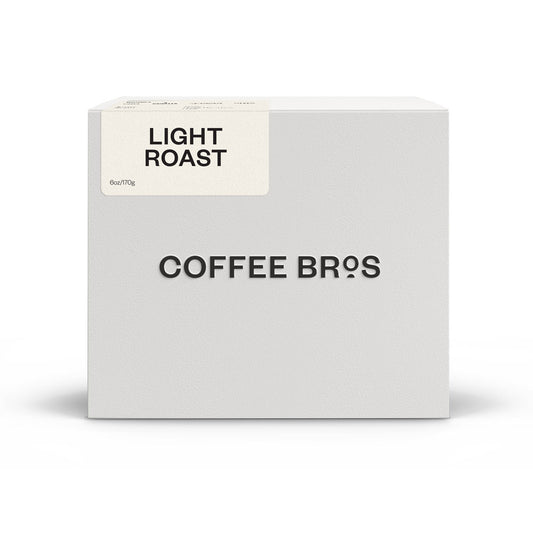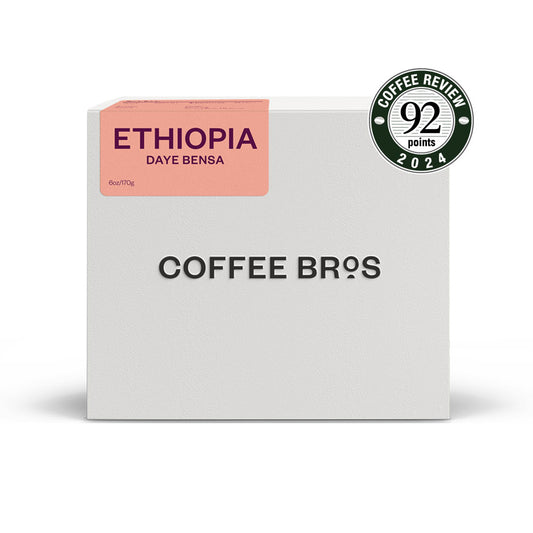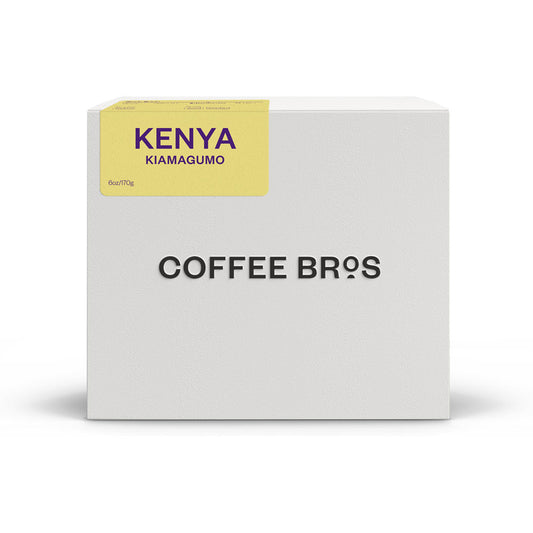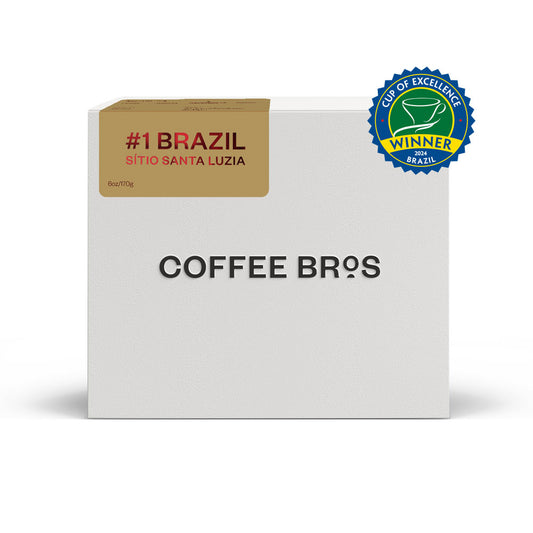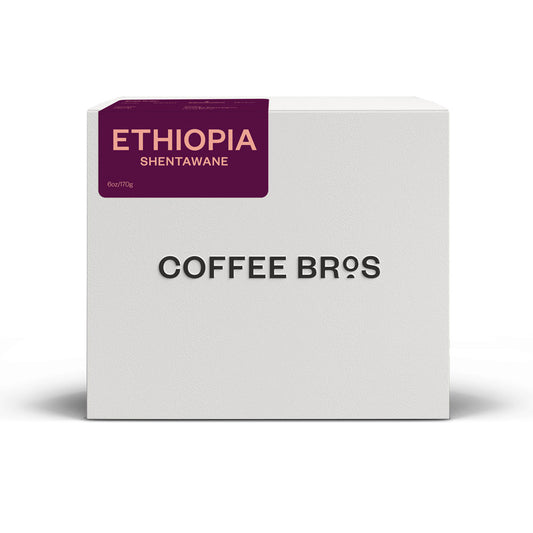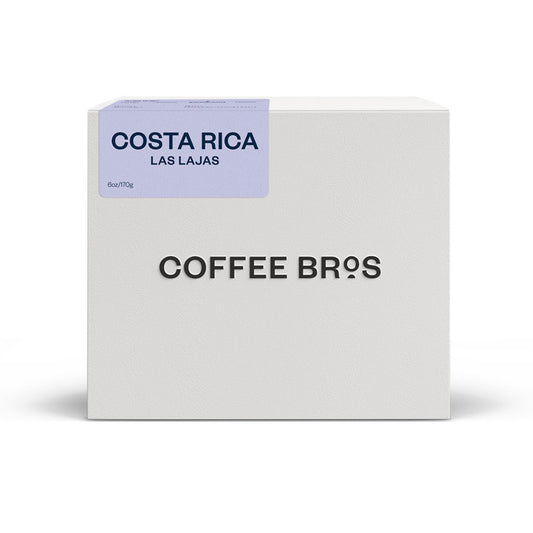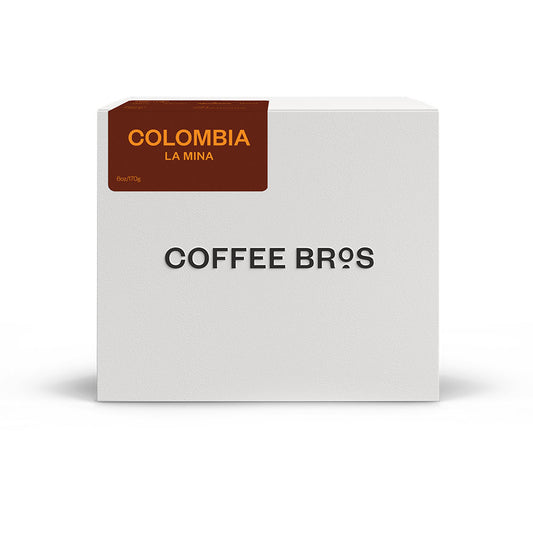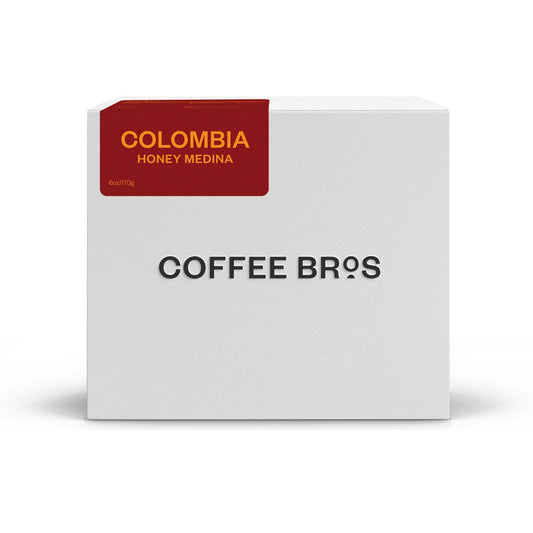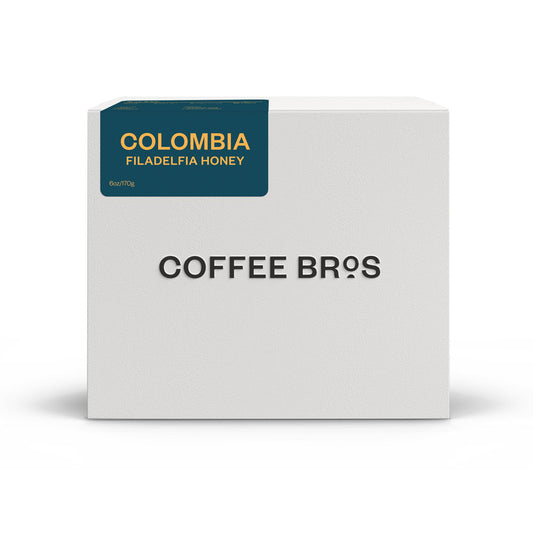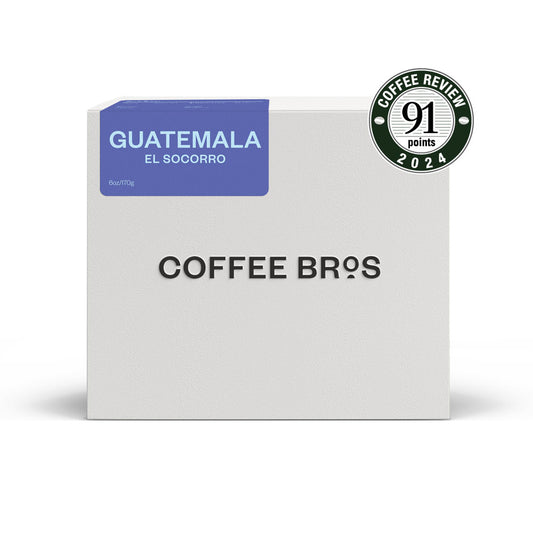Collection: Light Roast Coffee
-
Light Roast Coffee
An extremely sweet and delicate coffee with bright citrus notes
An extremely sweet and delicate coffee with bri...
Regular price From $10.29Regular priceUnit price / per -
Best Seller
Ethiopia | Daye Bensa | Natural
A crisp and clean light roast with brilliant fruit-forward notes from our friends at Daye Bensa
A crisp and clean light roast with brilliant fr...
Regular price From $12.85Regular priceUnit price / per -
Kenya AA | Kirinyaga | Washed
An adventurous coffee with notes of plum, cocoa, and lemon
An adventurous coffee with notes of plum, cocoa...
Regular price From $12.89Regular priceUnit price / per -
Kenya Peaberry | Kiamagumo | Washed
An adventurous coffee with notes of plum, cocoa, and lemon
An adventurous coffee with notes of plum, cocoa...
Regular price From $12.89Regular priceUnit price / per -
Colombia | Fruit Loops | Gesha Washed
A lightly-roasted Gesha coffee from our partners at In Conexus with taste notes of "Froot Loops" cereal!
A lightly-roasted Gesha coffee from our partner...
Regular price $37.99Regular priceUnit price / per$39.99Sale price $37.99Sold out -
Colombia | La Muralla | Pink Bourbon Honey
A bold, well-balanced honey processed coffee with notes of cooked apple
A bold, well-balanced honey processed coffee wi...
Regular price From $14.39Regular priceUnit price / per$29.99Sale price From $14.39Sold out -
Brazil | #1 Cup of Excellence | Sítio Santa Luzia
The future of coffee: A coffee that represents the future of sustainable coffee production
The future of coffee: A coffee that represents ...
Regular price $79.99Regular priceUnit price / per -
New
Kenya AA | Riara Estate | Washed
An adventurous coffee with notes of plum, cocoa, and lemon
An adventurous coffee with notes of plum, cocoa...
Regular price From $12.89Regular priceUnit price / per -
Best SellerSold out
Ethiopia | Shentawane | Natural
A crisp and clean light roast with brilliant fruit-forward notes from our friends at Daye Bensa
A crisp and clean light roast with brilliant fr...
Regular price From $12.85Regular priceUnit price / per -
New
Guatemala | El Socorro | Gesha Washed
A crisp and clean light roast with brilliant fruit-forward notes from our friends at Daye Bensa
A crisp and clean light roast with brilliant fr...
Regular price $39.99Regular priceUnit price / per
Looking for something extraordinary? We've got a selection of unique coffees from different roast types to origins. Use the selection below to find your match!
Shop All Coffee
-
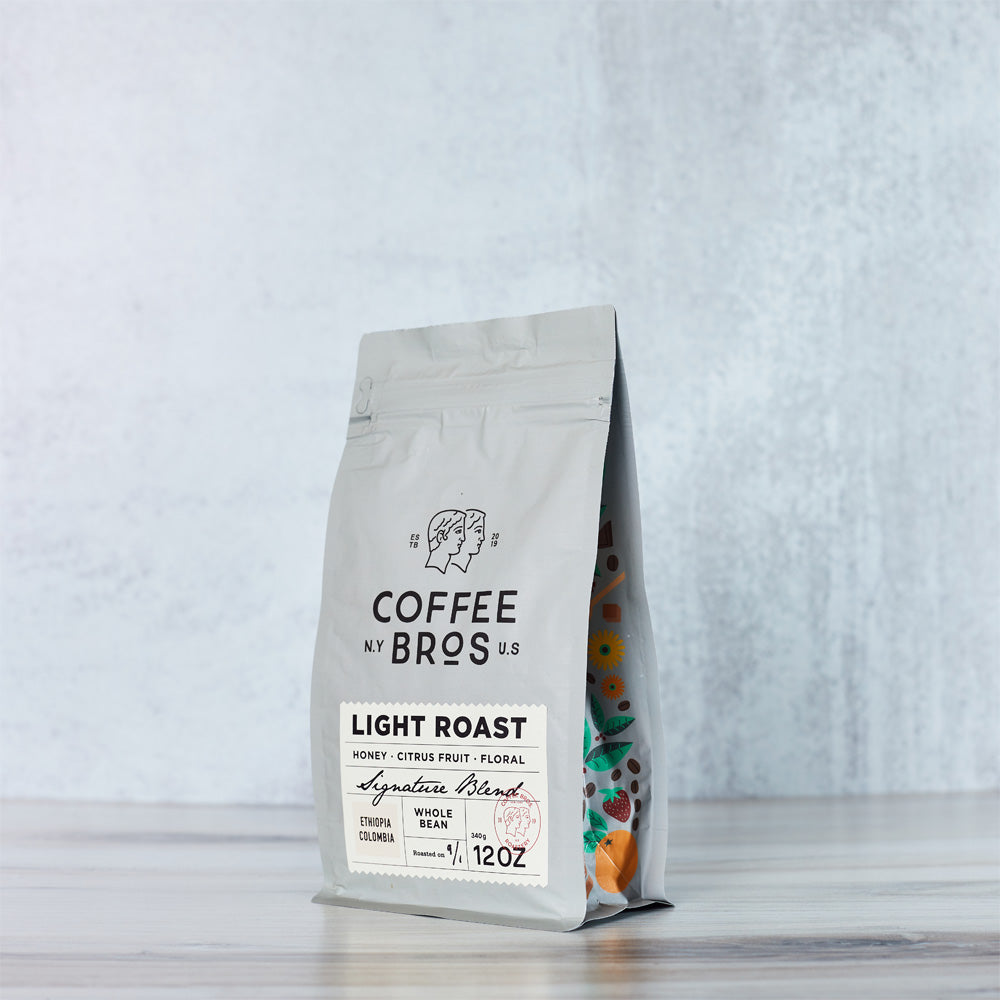
Light Roast Coffee
Roasted to highlight the terroir of specific, high-altitude coffee-growing regions and processing...
-

Medium Roast Coffee
Our medium roast coffees are rich and smooth, roasted to highlight subtle...
-
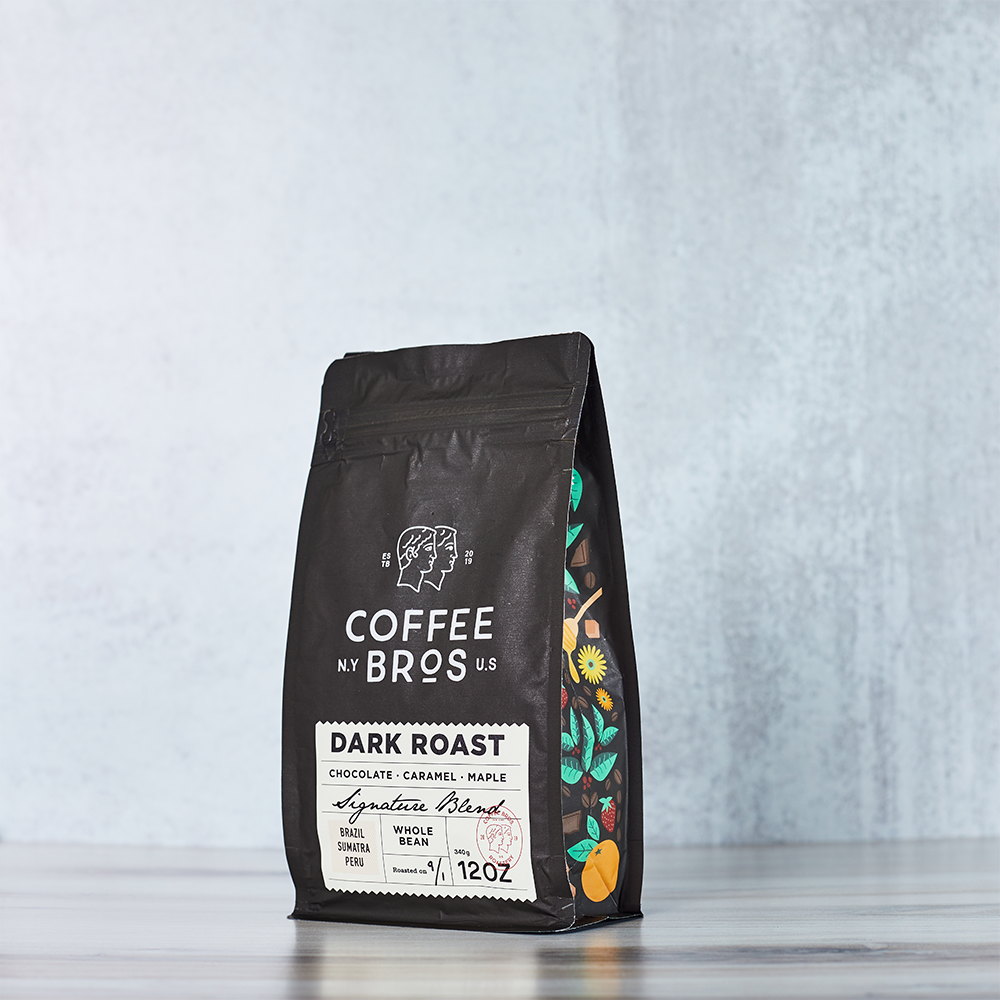
Dark Roast Coffee
Our classic dark roast coffees are roasted lighter to bring out the...
-

Espresso Roast Coffee
Before launching our Coffee Bros. brand in early 2018, we made a...
Shop Single Origin Coffee
View all-
Best Seller
Ethiopia | Daye Bensa | Natural
A crisp and clean light roast with brilliant fruit-forward notes from our friends at Daye Bensa
A crisp and clean light roast with brilliant fr...
Regular price From $12.85Regular priceUnit price / per -
Best Seller
Costa Rican | Las Lajas | Natural
An exceptionally well-balanced coffee with winey fruit and chocolate notes
An exceptionally well-balanced coffee with wine...
Regular price From $13.40Regular priceUnit price / per -
New
Colombia | La Mina | Natural
A well-balanced honey coffee that works exceptionally well as an espresso
A well-balanced honey coffee that works excepti...
Regular price From $12.89Regular priceUnit price / per -
New
Colombia | Honey Medina | Caturro Honey
A well-balanced honey coffee that works exceptionally well as an espresso
A well-balanced honey coffee that works excepti...
Regular price From $12.89Regular priceUnit price / per$26.99Sale price From $12.89Sale -
New
Colombia | Filadelfia Honey | Honey Fermentation
A well-balanced honey coffee that works exceptionally well as an espresso
A well-balanced honey coffee that works excepti...
Regular price From $15.99Regular priceUnit price / per -
New
Guatemala | El Socorro | Pacamara Natural
A crisp and clean light roast with brilliant fruit-forward notes from our friends at Daye Bensa
A crisp and clean light roast with brilliant fr...
Regular price From $12.89Regular priceUnit price / per -
Kenya AA | Kirinyaga | Washed
An adventurous coffee with notes of plum, cocoa, and lemon
An adventurous coffee with notes of plum, cocoa...
Regular price From $12.89Regular priceUnit price / per -
Kenya Peaberry | Kiamagumo | Washed
An adventurous coffee with notes of plum, cocoa, and lemon
An adventurous coffee with notes of plum, cocoa...
Regular price From $12.89Regular priceUnit price / per
Coffee Questions
The difference between Light, Medium, and Dark roast coffees?
The difference between light, medium, or dark roasted coffees goes deeper than their appearance in color and touches on their depth of roast (development) and intended taste notes.
We define coffee not only by the color but how far along in the roasting development process we take a coffee. We also "cup" or sample our coffees to ensure they hit on certain flavor profiles to hit on that a perceived roast color flavor. All-in-all, color is an excellent initial determining factor for what a coffee might taste like and give consumer hints on what to expect in their brewed cup.
What is a Light Roast Coffee?
Light roasted coffee is defined not only by the color but also by how "developed" the coffee is. Coffee goes through several stages during the roasting process, from drying, Maillard, caramelization, and carbonization. Light roast coffees typically end after first crack (when the coffee begins to pop due to built-up pressure), which is right around the start of the caramelization stage. You can expect light-roasted coffees to be brighter with higher acidity and sweetness than its darker counterparts. Light roasted coffees fall within the floral, sweet, fruity, and sour/fermented flavors while darker roasted coffees are more caramelized, nuttier, and chocolatey.
Does Light Roast coffee have more caffeine?
The caffeine difference between light and dark roast is insignificant though many think the more robust and bolder taste of dark roasted coffees has more caffeine. Caffeine content has more to do with the brew method, such as an espresso having higher caffeine content per ounce than a brewed cup of coffee.
There is also confusion around coffee density and how that affects the caffeine difference between light and darker roasted coffees. Dark roasted coffees lose density, and the beans increase in size in the roasting process, while Light roasted coffees are heavier and denser. If you were to weigh out coffee by volume (by using a tablespoon), your result would equate to a more robust cup of coffee with a light roast than if you measured by weight using a scale.
Read our article on: How Much Caffeine Is In Coffee vs Tea vs Soda
What does Light Roast Coffee taste like?
Light roasted coffees will be floral, bright, sweet, and contain more acidity than their darker counterparts.
Light roasted coffee retains much of its natural flavor since the coffee is not roasted deep into the caramelization stage. The more developed a coffee becomes or the longer it is roasted, the bold, nutty, roasty, and chocolatey flavors one can expect. When roasting coffee beyond caramelization and into carbonization (or second crack), this is what most would refer to as a dark roast. Bitterness may be present in a Dark roasted coffee, but one could expect more dark chocolate, smoky, and a heavy body/mouthfeel.
What are the best brewing methods for Light Roasted Coffee?
The best way of brewing Light Roasted Coffee is with the pour-over method. The pour-over method, such as using a v60 or Fellow’s Stagg brewer will allow you to extract the full potential of your coffee. We like the pour-over method because of how much control the barista must influence the outcome of the brew. The three most important factors of brewing the perfect cup include time, temperature, and brew ratio (water to coffee weight), which you have control over when doing a manual pour-over.
We find that pour-overs extract the most flavor from the coffee and work extremely well for Light Roasted Coffees. Let’s remember, light roasted coffees are meant to be drunk black (you can certainly add milk, but then you are missing the point of why it roasted light in the first place), which is why we prefer the control and precision of the pour-over method to extract the most flavor.
We also love Light Roasted Coffees such as espresso but know they will be very bright, acidic, and sweet. You can certainly add milk to a lightly roasted espresso drink, but the coffee will get lost in anything above a 1:1 ratio (40g espresso shot to 40g of milk).
Additional Reading
- Choosing a selection results in a full page refresh.

